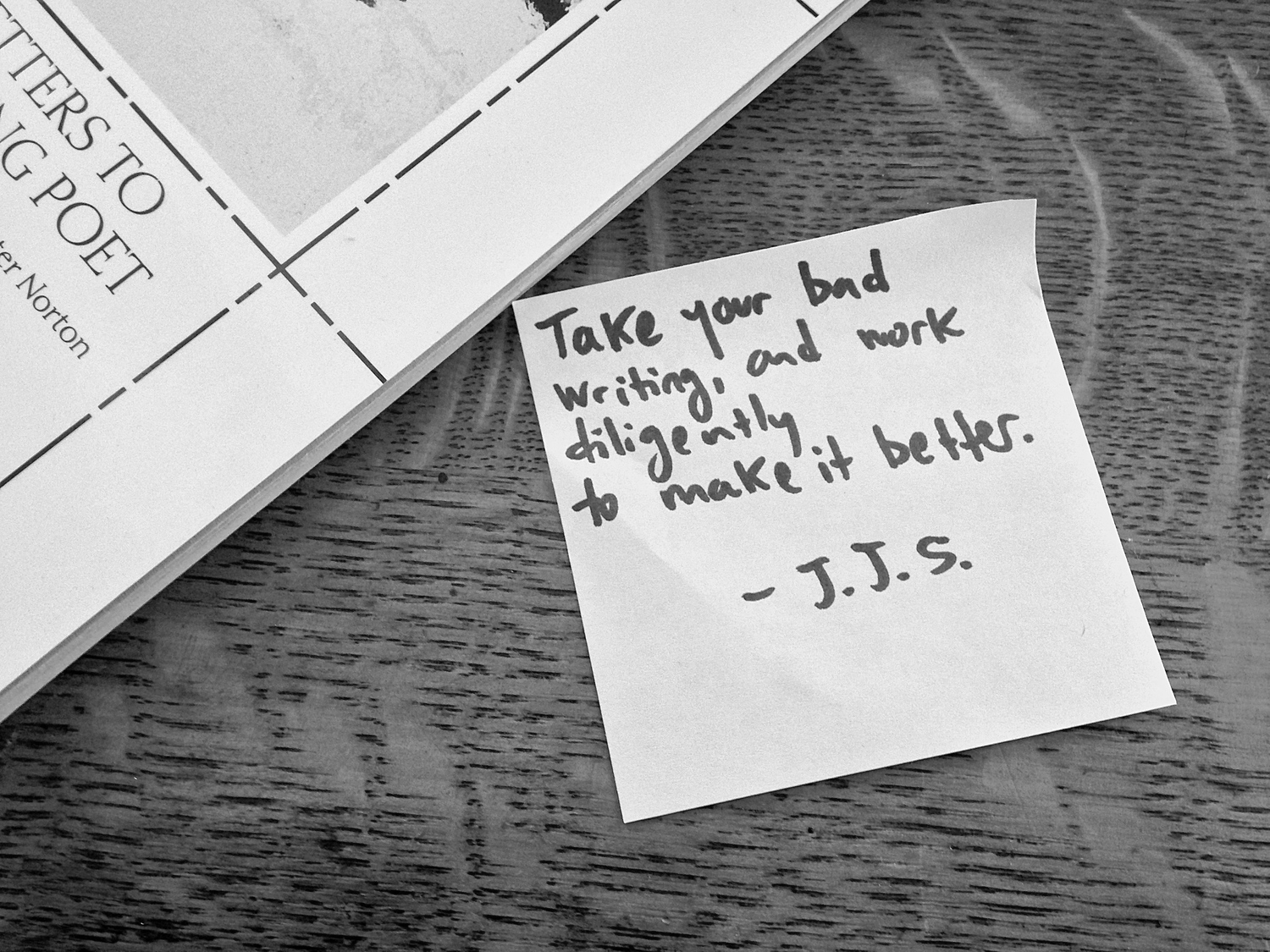In an unfortunate coincidence of timing, a pile of rejection letters arrived immediately after my great trip to L.A.
Rejection. That thing that makes you dismiss every good thing that’s ever happened and makes you feel like you’re a failure and always will be. Just that.
I haven’t really mentioned here on the blog much about the book I’ve been writing. But there, I said it, I’ve been writing a book. It feels scary and vulnerable to put down those words where you can see them. Let me try it again. I’M WRITING A BOOK.
Phew, so, at least I’ve gotten honest with you. Though maybe it will be a terrible book that publishers laugh at and gleefully set fire to, just for fun.
But you can see, right there, with the talk of publishers laughing and setting fires, the danger in this whole writing and publishing thing: It’s easy to feel down about it all. And that brings me to the reason I’m writing today, which is definitely not to be a downer. The opposite.
As I’ve studied this strange and fickle and often insolvent business of writing and publishing books, I’ve collected a few gems about rejection. And it’s those gems that I want to bring out into the light today, so that we can admire together the way they sparkle and shine. I’m actually excited to talk about rejection.
How about this, for starters. Ever wondered why the “22” in the classic Catch-22? You probably haven’t, but I’m going to tell you anyway. The book’s publisher, Simon & Schuster, was the twenty-second publishing house to consider the manuscript. That’s right. Joseph Heller received rejections from twenty-one houses before his acceptance. And we’re talking about Catch-22, that classic of the English language.
Meanwhile the best-seller Zen and the Art of Motorcycle Maintenance was rejected by 123 publishing houses. That’s right, a mere one hundred and twenty-three. (Source for these numbers.) I didn’t even know there were that many publishers out there.
So the preponderance of evidence suggests rejection is not a sign from the gods that you should give up, throw in the towel, because you’re no good. On the contrary, evidence suggests rejection is like the rite of passage at the free-to-be-you-and-me college my husband attended, where students do a three-week trip in the Arizona desert without cushy amenities like toilet paper, so that, forever afterward, they’ve accessed a deeper centeredness and oneness with the environment. That’s what rejection is like: no toilet paper.
That’s my philosophical view. Then there’s the practical side. By which I mean, what are we actually supposed to do with rejection?
From a friend of a friend who’s an actress, constantly auditioning for parts and, yes, raking in her share of rejections: Give yourself a day to feel shitty. Otherwise it festers. So allow yourself that. You get to feel shitty.
Then, of course, there are the immortal words of Saul Bellow, to which I merrily return as often as possible: “Rejections are not altogether a bad thing. They teach a writer to rely on his own judgment and to say in his heart of hearts, ‘To hell with you.’ ” I get this wicked smile on my face as I read and re-read those words. To hell with you, then!
And then there’s the eat-your-vegetables sort of wisdom from John Jeremiah Sullivan, author of Pulphead and, IMHO, wizard of the English sentence. He says, “Take your bad writing and work diligently to make it better.” That makes my face do the twisted sour expression, but I know it’s good advice, so I have it Sharpied here on a Post-It at my desk.

Then there’s the stuff that brings me comfort. For instance, a dirty gin martini. But also the little book that’s packed with lots of wisdom: Bird by Bird by Anne Lamott. I could go on and on about that book, but here I’ll limit myself to just two gems. The first: Lamott writes, “The real payoff is the writing itself.” Yes, yes, yes. The strange and fickle game of publishing is a secondary matter. No matter how bad or good things go out in the world, the best part is still the writing.
I keep coming back to that. Somehow it gets truer and truer. “This time it’s really really true,” I think to myself.
And finally – I love this – Lamott says, “The only thing to do when the sense of dread and low self-esteem tells you that you’re not up to this is to wear it down by getting a little work done every day.”
